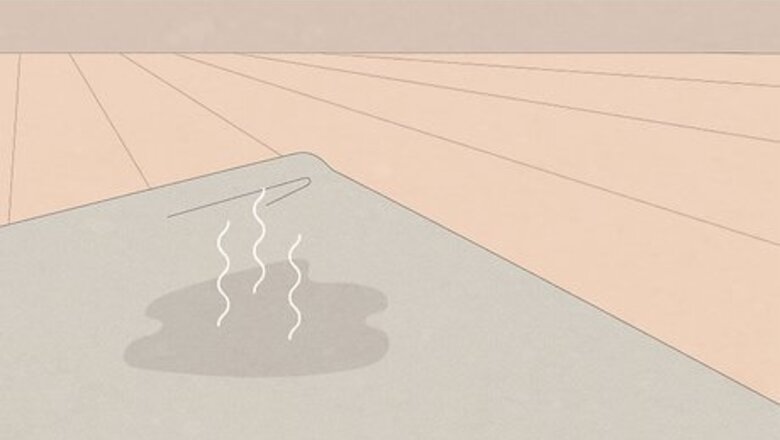
views
- Spray a liberal amount of an enzyme cleaner made for removing pet stains and odors to the smelly area.
- Let the enzyme cleaner dry completely before vacuuming the area to get rid of any excess product or dried urine.
- Alternatively, sprinkle baking soda over the soiled part of your carpet and let it sit overnight to absorb the odor before vacuuming it up.
Using an Enzyme Cleaner
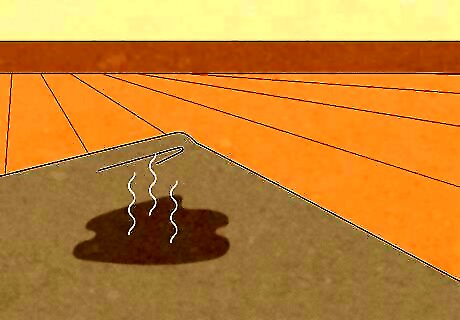
Find the source of the smell as soon as possible. Cat pee left to sit in your carpet will start smelling bad within a short amount of time. It can also potentially damage your carpet since the moisture can weaken the bonds between the carpet and the backing material. If you smell even a hint of cat urine in your home, find the source of the odor right away.
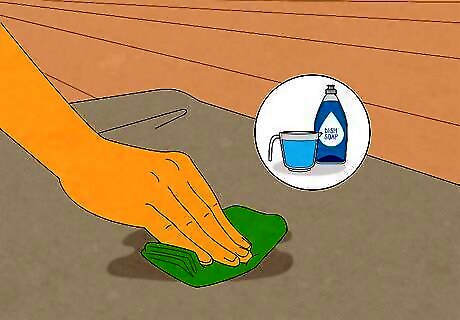
Combine dish soap and lukewarm water and blot the stain. Mix together ¼ tsp (1.2 ml) of liquid dish soap and 1 cup (236.6 ml) of lukewarm water. Then, dampen a paper or cloth towel with the solution. Blot the stain by pressing down repeatedly on the area with the towel. Repeat this method until you don’t see any more urine being picked up by the towel. Be sure to blot the stain instead of scrubbing it. Scrubbing can actually cause the urine to set even deeper into the carpet.
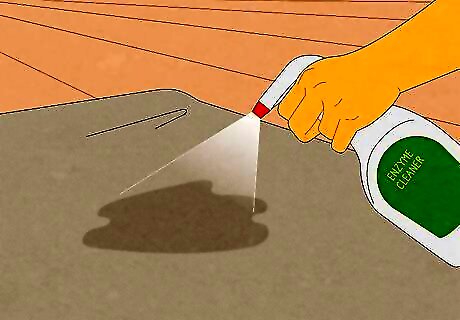
Use an enzyme cleaner to deodorize your carpet. Enzyme cleaners use biological methods to get rid of organic waste stains such as urine and are some of the only products that will really get clean your carpet. This cleaner will help remove the stain, preserve your carpet, and get rid of the odor. Purchase an enzyme-based cleaner specifically formulated for pet stains at your local pet store or online. Follow the manufacturer’s instructions when applying it to the stain. Most pet enzyme cleaners can be applied liberally to the affected area and left to dry completely. Be careful when using enzyme cleaners since they can react differently on different carpets. Always test it out on a discreet part of the carpet before treating the stain. To be safe, keep your pets and any children away from the area while you’re using any kind of commercial cleaner.
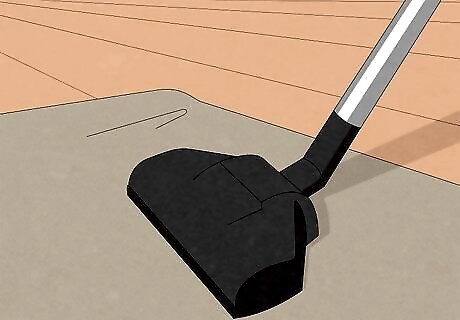
Vacuum the carpet once it’s completely dried. Once the enzyme cleaner has dried completely, run over the area with your vacuum. Vacuuming can also help pick up any urine that’s sunk deep into your carpet.
Using Vinegar, Baking Soda, or Club Soda
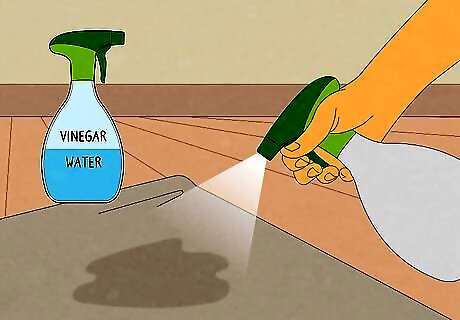
Spray a mixture of equal parts water and vinegar on your carpet. Pour equal parts vinegar and water into a spray bottle and give it a good shake to mix the solution. Then, spray a liberal amount over the smelly section of carpet and leave it to sit for at least 30 minutes. Finally, use a damp towel or rag to blot the area and then let it dry. If it still smells, repeat this process again. Another option is to use hydrogen peroxide if you don’t have vinegar. Combine 1 part 3% diluted hydrogen peroxide with 5 parts water in a spray bottle. Keep your pets and any children away from the area as you clean. One tip is to place an upside-down laundry basket over the spot you’re cleaning to prevent others from going near it or walking over it. Keep in mind that white vinegar will likely be less effective at completely removing the odor compared to an enzyme cleaner. If the smell sticks around, try an enzyme cleaner instead.
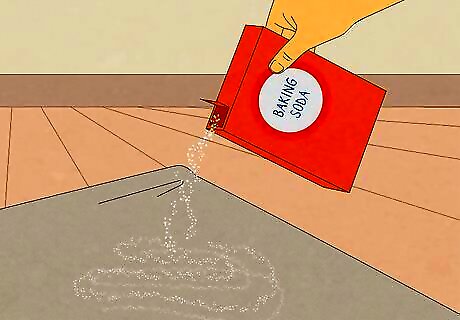
Sprinkle baking soda over the smelly area. Baking soda is a great household item that’ll effectively remove any unpleasant odors. Simply sprinkle enough baking soda to completely cover the part of your carpet where the odor is coming from. Leave it to sit for a couple of hours or overnight if the smell is really bad. Then, vacuum up the baking soda and see if the odor has disappeared. If not, simply apply more baking soda. Place a towel over where you sprinkled the baking soda to keep pets and children away. Another option is to use corn starch if you don’t have baking soda. For a potentially deeper clean, add 1 tsp (4.9 ml) of dish soap to 1 cup (236.9 ml) of hydrogen peroxide, then drizzle the solution over the baking soda. Use a scrub brush to scrub the mixture into the carpet and blot the area with a damp towel to clean up the solution. Then, leave the carpet to dry. Remember, this method might not be as effective as an enzyme cleaner. If you go through the process and still notice a smell, try using an enzyme cleaner.
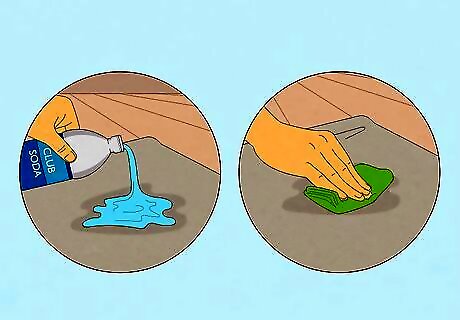
Pour club soda directly onto the source of the odor. Believe it or not, club soda is actually great at removing stains and getting rid of odors. Once you’ve poured the club soda, blot the area with a dry rag or towel and soak up as much of the liquid as you can. Let the carpet dry completely, then check to see if any scent lingers. If so, repeat the process. Keep pets and children away as you work. Even though club soda isn’t toxic to pets or small children, it’s still best to keep them away from the area so that they don’t interfere with the cleaning process. As an alternative, some people have also found that applying a mouthwash such as Listerine to the area helps reduce unpleasant odors. Just be sure to spot-test this on a part of your carpet that’s not visible and avoid using colored mouthwashes. Note that this method might not be as effective as an enzyme cleaner. If you go through the process with no luck, you'll want to try using an enzyme cleaner.
Preventing Your Cat From Peeing on the Carpet
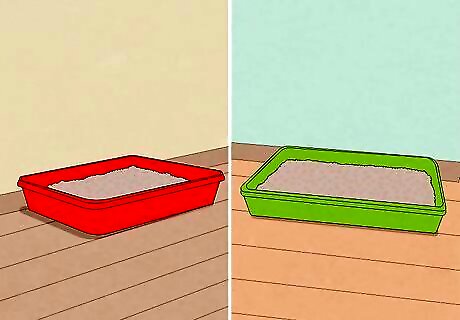
Place multiple litter boxes throughout your home. The general rule of thumb is to have 1 litter box per cat plus 1 additional box. So, if you have 2 cats, place 3 litter boxes throughout your home. Place each litter box in a different area or room and make sure they’re in areas that are easily accessible to your cat. Avoid placing the litter box near noisy or heat-radiating appliances, such as your washing machine or furnace. Such locations can make your cat nervous and unwilling to use the litter box. If your house has multiple levels, place 1 litter box on each floor so your cat has options. Keep the litter box far away from your cat’s food and water.
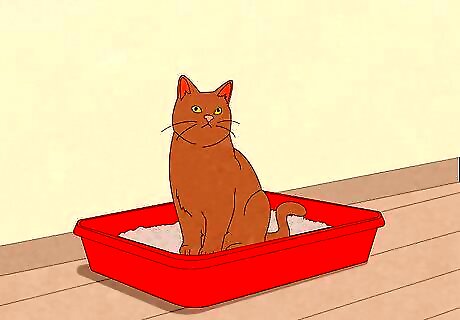
Make sure the litter box is the proper size for your cat. The litter box should be big enough so that your cat can easily turn around without touching the sides of the box. In addition to that, they should be placed low enough on the ground so that your cat can easily access it. Try a couple different sizes of litter boxes to see which one fits your cat best.
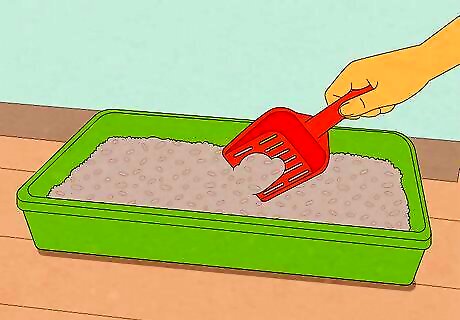
Clean the litter box daily. Your cat might choose not to do its business in the litter box if it’s too dirty. Scoop your litter box at least once a day and replace the litter twice a week. If you have a lot of cats, you may need to replace the litter every other day. Scrub the box with mild dish detergent and water every time you change the litter to keep it clean.

Identify things that may be stressing out your cat. It’s possible that your cat’s refusal to use its litter box is due to anxiety and stress. Things like moving, introducing new people or pets into the house, or even changing up your daily routine can all be potential sources of stress for your cat. Think about if any changes have recently taken place and do what you can to help reduce your cat’s stress. For example: Play with your cat more often. Provide your cat with plenty of spaces where it can hide and feel safe. Slowly introduce your cat to new pets or people through gradual contact. Talk to your vet about getting your cat things like calming pheromones or medication for stress.
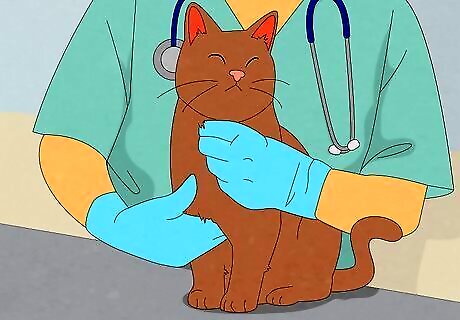
Talk to your vet about potential medical conditions. Unfortunately, there are many medical conditions that may cause your cat to stop using the litter box. Set up an appointment with your vet to see if there are any underlying issues that need to be addressed. If your cat is healthy, it may simply be a behavioral issue.


















Comments
0 comment